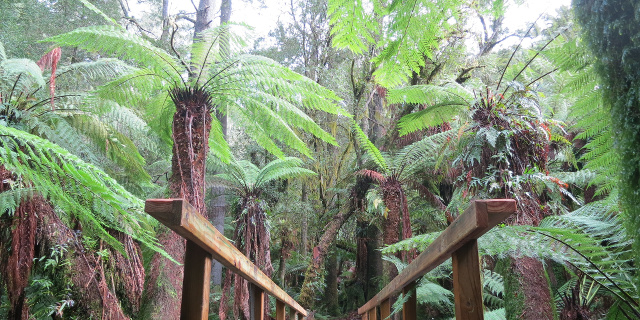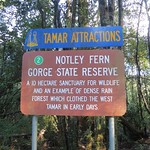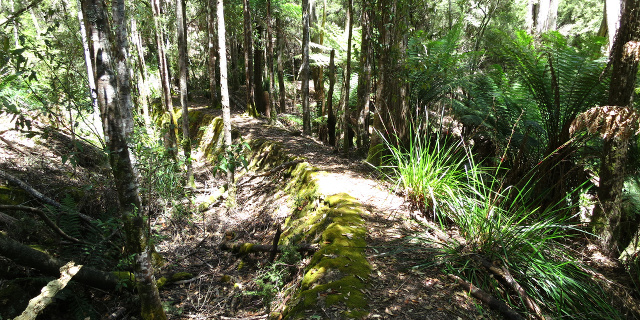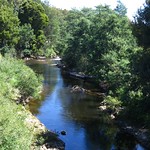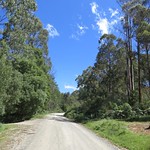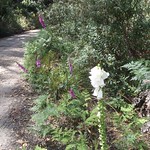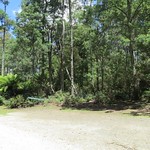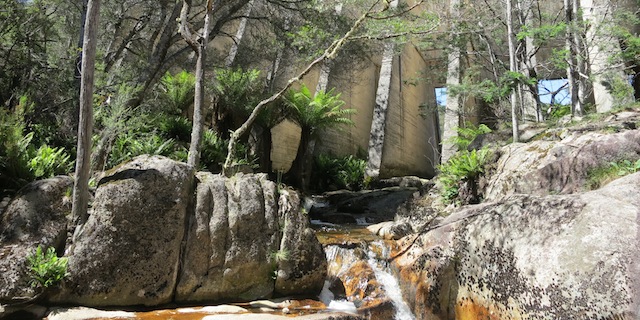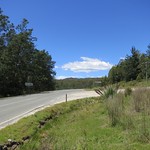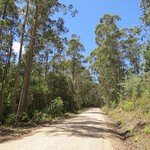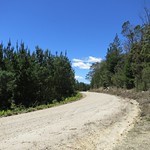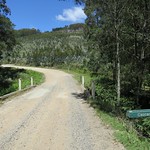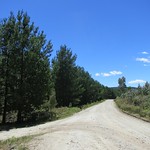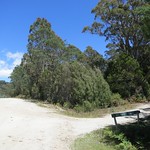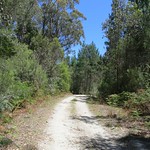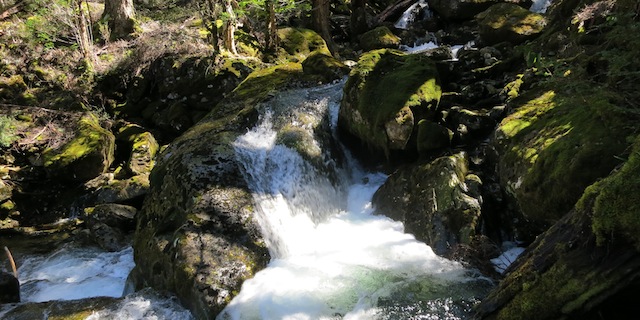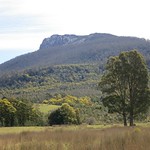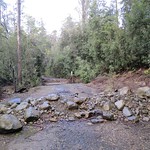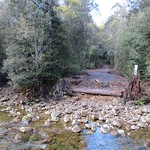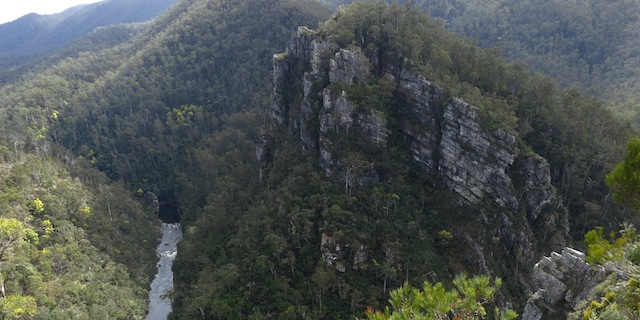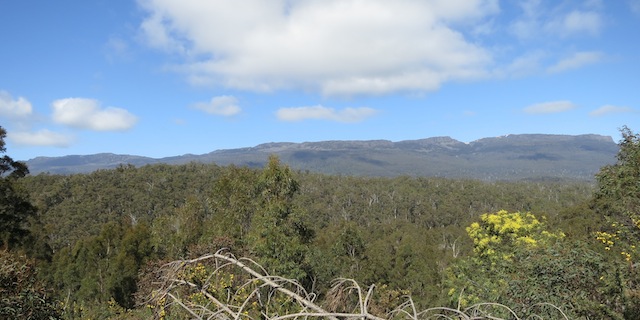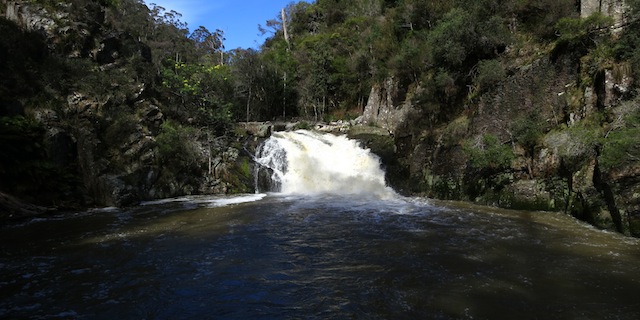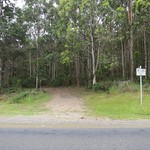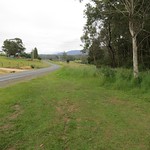Notley Fern Gorge is a short distance northwest of Launceston, Tasmania, Australia. Gowan’s Creek flows through a small patch of rainforest, surrounded by moss, fungi and the eponymous ferns. A 1.5 kilometre walking track loops through the gorge.
The walking track crosses Gowan’s Creek on four bridges. Floods in August 2013 damaged these bridges and the track. The Parks & Wildlife Service repaired the track, replaced the bridges and re-opened the circuit in June 2014.
Getting there
For people living in or near of Launceston, this is one of the easiest walks to reach. From the West Tamar Highway, turn onto Bridgenorth Road then right onto Notley Gorge Road. When Notley Gorge Road meets Notley Hills Road, take the sharp left turn. This route is sealed up to and including the car park at the start of the walk.
From the north, Notley Hills Road is unsealed.
